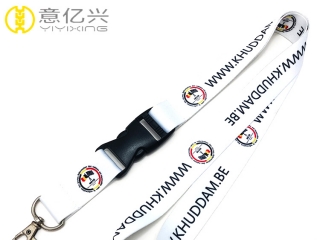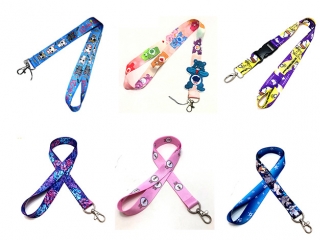Why Do Kids Wear Lanyards?
Lanyards have become a popular accessory among kids in recent years. You may have noticed children wearing lanyards around their necks, often customized with colorful designs or featuring their favorite characters. But what is the reason behind this trend? In this article, we will explore the various reasons why kids wear lanyards, particularly custom lanyards, and examine the benefits and viewpoints associated with this phenomenon.
1. Identification and Security:
One of the primary reasons why kids wear lanyards is for identification and security purposes. Many schools and organizations provide students with custom lanyards that hold identification badges or access cards. These badges typically display the student's name, photo, and other relevant information, allowing for easy identification within the school premises. Lanyards help ensure that students can be quickly recognized and accounted for, enhancing overall security measures.
2. Easy Access to Essential Items:
Custom lanyards also serve as a practical solution for kids to keep essential items easily accessible. For instance, lanyards can hold keys, small wallets, or bus passes, allowing children to conveniently carry these items without the risk of misplacing them. By wearing a lanyard, kids can keep their belongings secure and readily available, reducing the chances of losing important items throughout the day.

3. Expression of Personal Style and Interests:
Kids often use lanyards as a means of self-expression and showcasing their personal style and interests. Custom lanyards provide a canvas for creativity, enabling children to select designs, colors, or patterns that align with their preferences. They may choose lanyards featuring characters from their favorite movies, sports teams, or bands, allowing them to proudly display their fandom and connect with others who share similar interests.
4. Sense of Belonging and Unity:
Custom lanyards can also foster a sense of belonging and unity among kids. In certain settings, such as school clubs, extracurricular activities, or summer camps, lanyards with specific logos or emblems may be distributed. Wearing these lanyards creates a visual representation of group affiliation, encouraging camaraderie and a shared identity among participants. It helps kids feel connected to their peers and promotes a sense of inclusivity within the community.
5. Promoting Organization and Responsibility:
Wearing a lanyard can instill a sense of organization and responsibility in kids. By having a designated place to hold their identification cards or keys, children learn the importance of keeping track of their belongings and taking responsibility for them. Lanyards serve as a visual reminder to be mindful of their personal items, teaching valuable life skills such as organization, accountability, and independence.
6. Enhancing School Spirit:
Custom lanyards can contribute to fostering school spirit and pride among students. Many educational institutions offer lanyards featuring their school colors, logos, or mottos. By wearing these lanyards, kids demonstrate their enthusiasm and support for their school, creating a sense of unity and shared pride. It encourages students to actively participate in school events, sports activities, and other community-building initiatives.
The trend of kids wearing lanyards, especially custom lanyards, has gained popularity for several reasons. From identification and security benefits to personal expression, easy access to essential items, and promoting a sense of belonging, lanyards serve various purposes in a child's life. They offer practicality, organization, and the opportunity for kids to showcase their personal style and interests while fostering unity and school spirit. Whether it's for school, extracurricular activities, or personal use, lanyards have become a functional and fashionable accessory that has found its place in the world of kids' fashion and functionality.
-
 Such a beautiful keychain makes people love and hate!
Such a beautiful keychain makes people love and hate!If you are a designer, then lines like "Tune a little bit here", "Help me change t...
Do you like ?0
Read more -
 Easy to carry Water Bottle Lanyards buying
Easy to carry Water Bottle Lanyards buying -
 Advantages of using personalized printed Silicone Wristbands
Advantages of using personalized printed Silicone Wristbands -
 The difference between nylon lanyard vs polyester lanyard - Yiyixing
The difference between nylon lanyard vs polyester lanyard - YiyixingWhat is Polyester Made Lanyards?
When it comes to <...
Do you like ?0
Read more -
 Does Wear Cute lanyard can keep in a good mood?
Does Wear Cute lanyard can keep in a good mood?With the growth of age, girls are more and more inclined to adorabl...
Do you like ?0
Read more -
 Why not choosing custom flight tags as a gift?
Why not choosing custom flight tags as a gift?Fabric key tag, made by embroidery or woven is one of our new appli...
Do you like ?0
Read more





